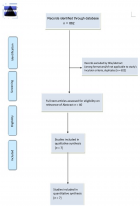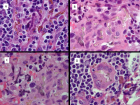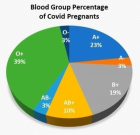Table of Contents
Patient with Fibroadenoma on Biopsy, Found to have Phyllodes on Final Pathology: A Case Report
Published on: 28th December, 2023
Distinguishing between fibroadenomas and phyllodes tumors is a challenge in breast surgery, despite advances in both radiology and pathology. In this case report, we analyze a patient presenting with a breast mass with multiple core needle biopsy results consistent with fibroadenoma, who underwent enucleation and was found to have phyllodes tumor on final pathology, thereby requiring surgical re-excision. This case report highlights the importance of patient clinical presentation in differentiating fibroadenomas and phyllodes tumors and explores how to achieve appropriate margins upon surgical re-excision after prior enucleation of phyllodes tumor via ultrasound localization of a seroma.
Case – Late Presentation of Invasive Keratinizing Squamous Cell Carcinoma
Published on: 27th December, 2023
Penile cancer, a rare but highly morbid disease, primarily manifests as squamous cell carcinoma (PSCC) originating from the squamous cells of the glandular and preputial skin. Late-stage diagnosis is common due to social stigma, psychological barriers, and nonspecific initial symptoms, resulting in poor overall survival rates, especially in metastatic cases. This case report illustrates a 38-year-old man with advanced metastatic PSCC, showcasing severe systemic manifestations and delayed presentation of the disease. Despite aggressive treatment options, the patient opted for palliative care, succumbing to the disease months after his diagnosis. Risk factors for PSCC include HPV infection, phimosis, chronic inflammation, and lifestyle factors, with higher prevalence in regions of low socioeconomic status. The psychological and sexual burden of penile cancer is significant, impacting patients’ well-being, mental health, and quality of life. In conclusion, efforts to reduce the stigma associated with penile cancer are crucial to prompt early diagnosis and treatment initiation. Encouraging seeking medical attention for symptoms can enhance the chances of recovery and minimize the need for invasive treatments. Addressing the psychosocial impact of the disease is imperative for holistic patient care.
An Update of Bronchiolitis - A Review
Published on: 22nd December, 2023
Bronchiolitis is one of the most common respiratory infections in children under 2 years of age predominantly caused by Respiratory syncytial virus and other viruses like influenza, Para influenza, and Adenovirus. Rhinovirus, etc. Most children have mild symptoms however bronchiolitis has also been well linked to severe morbidities and mortalities. Even though bronchiolitis has been well recognized for many years, there are still very few therapeutic strategies available beyond supportive management. There are many controversies about therapeutic management in bronchiolitis published in standard guidelines and research in this area. Management can be divided into pharmacological and supportive therapy. Evidence suggests that the current management of bronchiolitis is purely supportive consisting of oxygen supplementation, frequent suctioning, and maintaining good hydration and nutrition. Regarding pharmacological therapy, neither bronchodilators nor corticosteroids have significant efficacy in the treatment of bronchiolitis. However, some studies suggest that adrenaline and nebulizer 3% saline showed some benefit only in terms of outcome. The current recommendation also supports the use of Palivizumab as prophylaxis in certain groups of infants and young children.
A Mini Review of Newly Identified Omicron Sublineages
Published on: 18th December, 2023
The ongoing COVID-19 pandemic has seen the evolution of the SARS-CoV-2 virus, resulting in the emergence of various concerning variants with unique biological characteristics. As the pandemic continues, it will be crucial to promptly evaluate the potential of any new variant to cause severe illness. The severity of the latest Omicron sublineages, including BA.5, XBB, BQ.1.18, BA.2, BA.2.75, and EG.5.1, is currently under assessment. This system provides valuable and essential information for rapidly assessing the threat posed by new versions of the virus.
Fever of Unknown Origin in Children: The Challenge of History Taking
Published on: 24th November, 2023
A fever of unknown origin (FUO) in children is usually described as a fever of at least 8 days duration with no apparent diagnosis after initial investigations, including taking medical history and preliminary laboratory assessment. Infectious diseases are the most common cause of FUO, followed by rheumatologic and neoplastic conditions. In this report, we present a case of a 15-year-old Caucasian boy with a silent past medical history, who presented at our Pediatric ER department with a three-day history of fever, fatigue, and abdominal pain with diarrhoea. Initial laboratory testing and microbiological work-up were non-significant. At hospital admission, a broad infectious diagnostic work-up was pursued, including serologies and polymerase-chain-reaction (PCR) for CMV, EBV, HAV, Parvovirus, Toxoplasma gondii and Adenovirus, all negative. Given mild splenomegaly and linfadenopathy, systemic Juvenile Idiopathic Arthritis (s-JIA) was suspected, as well as Multi-inflammatory Syndrome in Children (MIS-C), but the patient did not meet their main diagnostic criteria. Malignancy was ruled out by a negative bone marrow fine-needle aspiration cytology and whole-body PET-CT scan. On hospital day 8, Brucella was identified on a new set of blood cultures and a combined antibiotic therapy was started with IV Gentamicin plus per os Doxycycline. The patient’s general conditions rapidly improved, and both fever and diarrhoea resolved. A reassessment of the patient’s medical history before discharge revealed exposure to unpasteurized soft cheese in the weeks prior to the onset of symptoms. This case underlines the importance of taking a complete medical history, as well as a full diagnostic work-up to unveil unusual infectious etiologies behind FUO. After the preliminary negative microbiological tests, a connective tissue disease was ruled out (i.e. lack of cutaneous or articular involvement), as well as malignancy, which led to a closer evaluation for infection and the diagnosis of Brucellosis.
Dermoid Cyst of the Mesentery of the Jejunum Following Appendectomy: A Clinical Case
Published on: 7th November, 2023
Mesenteric cysts and cystic mesenteric tumors are very rare abdominal growths. They may be localized all over the mesentery, from the duodenum to the rectum, however, they are mostly found in the ileum and right colon mesentery. There are several classifications of these formations, among which the one based on histopathologic features including 6 groups has been most commonly used: 1) cysts of lymphatic origin--lymphatic (hilar cysts) and lymphangiomas; 2) cysts of mesothelial origin--benign or malignant mesothelial cysts; 3) enteric cysts; 4) cysts of urogenital origin; 5) dermoid cysts; and 6) pseudocysts-infectious or traumatic etiology.A dermoid cyst is a benign, epithelial-lined cavitary lesion composed of ectoderm and mesoderm that can arise anywhere in the body, with a tendency to develop in midline structures.In 20% - 45% of cases, accompanying diseases that were not previously clinically manifested can be diagnosed during emergency interventions, requiring additional surgical interventions for their correction.The aim of the study is to demonstrate the successful treatment experience of a dermoid cyst of the mesentery of the jejunum, detected after traditional appendectomy.Clinical case: A mother brought her 9-year-old son, V., to the emergency department of the Kursk Regional Children’s Clinical Hospital with complaints of moderate-intensity pain in the right iliac region, multiple episodes of vomiting, and fever. Ultrasound features indicative of destructive appendicitis and peritonitis. In an emergency situation, after preoperative preparation, a traditional appendectomy was performed under intravenous anesthesia, using the Volkovich-Dyakonov approach. The postoperative period was uneventful. Moderate infiltration was observed on the control abdominal ultrasound examination, in the intestine (presumably the small intestine) in the right half of the abdominal cavity, with a solid formation measuring 27*33 mm, producing a dense acoustic shadow. On the 7th day after the initial intervention, a revision of the abdominal organs was performed. The loop of the jejunum with the formation was brought out into the wound. The capsule above the formation was dissected: the formation of bone density, when the capsule is separated, resembles a fecal stone in structure, considering the localization - a dermoid cyst. Step-by-step enucleation of the cyst was performed. The postoperative wound was tightly sutured in layers.
Diffuse Pediatric-Type High-Grade Glioma H3-/IDH-wildtype with MYCN Deletion and Constitutional Mismatch Repair Deficiency: Case Presentation
Published on: 26th October, 2023
Diffuse pediatric-type high-grade glioma H3-wildtype and IDH-wildtype (pHGG H3/IDH WT) is a heterogeneous entity that is currently defined by a combination of highly malignant morphology, glial or primitive neuroectodermal differentiation, and a number of molecular features. Depending on the DNA methylation profile in pHGG H3/IDH WT, three molecular subgroups are distinguished, one of which (pHGG MYCN) is characterized by amplification of the indicated gene. We report a unique case of pHGG H3/IDH WT in a 19-year-old girl with a deletion of the MYCN gene and constitutional mismatch repair deficiency syndrome.
Case Report: Carotidynia Correlated to Cancer Treatment?
Published on: 10th October, 2023
Carotidynia refers to an idiopathic, self-limiting, benign condition of head and neck pain emanating from a tender carotid artery. We report a case where a patient presenting with carotidynia combined with fever elevated white blood count and C-reactive protein (CRP), nine days after treatment with chemotherapy (paclitaxel-carboplatin) and granulocyte-colony stimulating factor (G-CSF). The condition resolved after treatment with glucocorticoids in combination with antibiotics. The radiological findings were congruent with caritodynia and the conclusion from the case was that the anti-cancer treatment was causative, supported by the literature reviewed, although paclitaxel has previously not been implicated.
Fetal Ductal Constriction due to Maternal Intake of Metamizole
Published on: 4th October, 2023
The prevalence of intra-uterine dysfunction of ductus arteriosus is unknown and the clinical consequences are poorly understood. We report a case of prenatal diagnosis of premature closure of the ductus arteriosus due to maternal intake of metamizole during pregnancy. Fetal echocardiography at 37 weeks of gestation revealed a right ventricular hypertrophy and suspected stenosis of the tricuspid valve. A cesarean section led to an excellent neonatal outcome. The aim of this report is to show echocardiographic abnormalities and outcomes of this rare phenomenom.
A Case of X-Linked Hypophosphatemia: Exploring the Burden in a Single Family and the Significance of a Multidisciplinary Approach
Published on: 24th September, 2023
A 46-year-old lady was diagnosed clinically with X-linked hypophosphatemia (XLH) with a rare pathogenic variant detected using exome sequencing. Phosphate-regulating endopeptidase homologous X linked (PHEX) is normally expressed in osteoblasts and osteocytes, and senses phosphate regulation. More than 1000 PHEX variants have been detected to date, which are caused by missense, nonsense, and frameshift mutations in addition to splice variants and copy number changes. The aberration in the PHEX gene leads to the upregulation of fibroblastic growth factor 23 (FGF23), which leads to defects in phosphate metabolism. This results in impaired bone growth and mineralization, short and disproportionate stature, leg bowing, musculoskeletal pain, spontaneous dental abscesses, rickets, and osteomalacia in XLH patients. The spectrum of manifestations differs between pediatric and adult patients. In our case study, two of the patient’s children started showing symptoms at a younger age, unlike their mother. Timely diagnosis and the start of treatment would help in their better management and improved quality of life.
Deep Venous Thrombosis as the Clinical Expression of POEMS Syndrome
Published on: 6th September, 2023
This case suggests that POEMS syndrome does present with a constellation of signs and symptoms that may lead a clinician to a multitude of other possible diagnoses. Diagnosis is often difficult and delayed. A good history and physical examination as well as a careful review of all workups are paramount in establishing this particular diagnosis. The major criteria of diagnostic for the syndrome are polyradiculoneuropathy, clonal plasma disorder, sclerotic bone lesions, the presence of Castleman disease, and elevated vascular endothelial growth factor. Minor features include organomegaly, extravascular volume overload, endocrinopathy, characteristic skin changes, papilledema, and thrombocytosis. The diagnosis is made with three of the major criteria, two of which must include polyradiculoneuropathy and clonal plasma cell disorder, and at least one of the minor criteria. In this article, we discuss the differential diagnosis and outline the clinical evaluation indicated.

HSPI: We're glad you're here. Please click "create a new Query" if you are a new visitor to our website and need further information from us.
If you are already a member of our network and need to keep track of any developments regarding a question you have already submitted, click "take me to my Query."

























































































































































